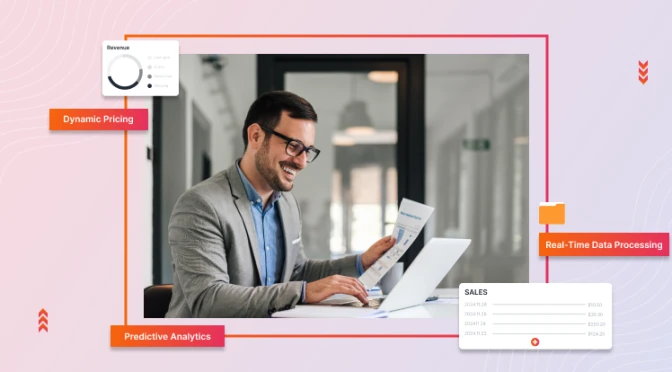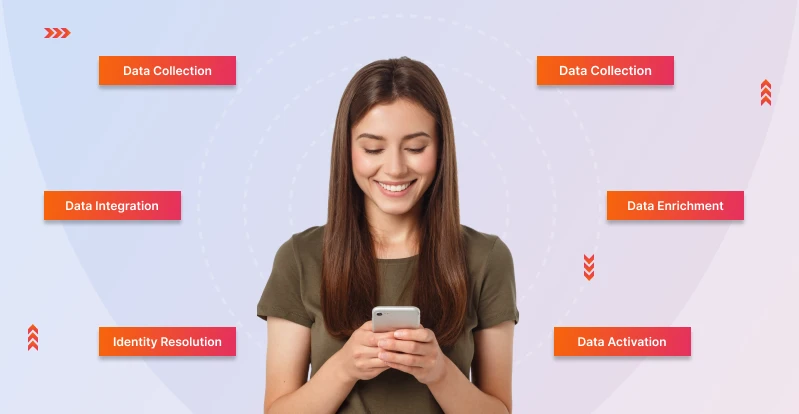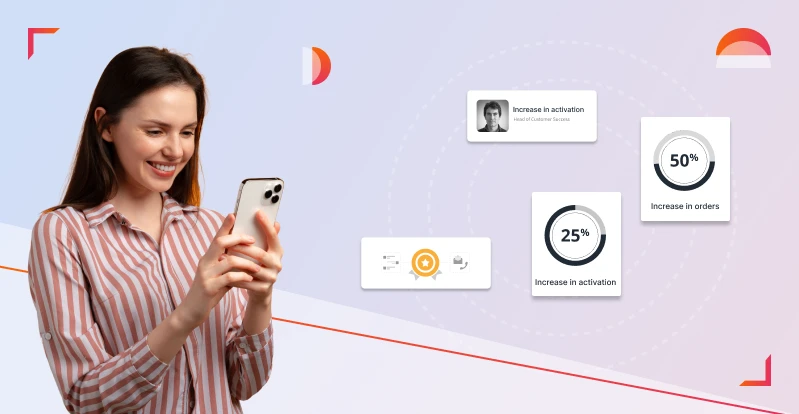Building a Single Customer View with a CDP

Local and global eCommerce businesses, whether B2B ecommerce or B2C, have lately been aiming for personalization. Creating personalized customer experiences is a simple yet extremely complex affair. A lot tried, a lot failed. The fuel behind this innovative way of engaging with customers to build personalized customer journeys on apps is nothing but customer data.
Customer data becomes absolutely crucial and critical in implementing personalization strategies for businesses to win over customers and grow. The problem is how to collect this customer data, what parameters to use, and from which sources. The problem does not end there. There are a lot of challenges with scattered and fragmented customer data.
According to a study by Segment’s report on the State of Personalization 2024,
- 54% of brands consider fragmented information as a challenge in building seamless experiences.
- 89% of leaders believe personalization will turn the tables for brands in their favor over the next three years.
- 61% of companies may be losing sleep over inaccurate data, as it messes up their personalization efforts powered by AI technology.
On top of that, Salesforce reports that 73% of customers expect respective brands to understand their expectations.
How is this possible? How do businesses understand customer expectations? From the customer data, correct? This is exactly where Single Customer View (SCV) and Customer Data Platform (CDP) play a game-changing role for businesses, be it B2B ecommerce, B2C eCommerce or D2C (manufacturing).
The basic function of SCV is to gather all the data of a specific customer to create a unified profile for that customer. CDP makes it possible to help businesses collect, centralize, cleanse, enrich, and enable data usage for marketing automation and personalization.
Realize Inevitable Importance of Single Customer View (SCV) for Businesses
Fragmenting customer data has been a critical challenge for businesses in creating customer-driven experiences. Even today, customer information is gathered over the web, mobile, and social media platforms. The data can be gathered by integrating CRM software systems and email campaigns.
Many times, most of this data remains in silos. This leads to conflicted customer data, and missed opportunities for timely personalization. This results in poor marketing strategy failure, zero outcomes, and lousy customer support.
With a Single Customer View (SCV) solution, the owners or their sales and marketing teams get a clear view of what customers are doing on their apps. This helps businesses to know their customers better, understand their expectations, and create holistic, data-driven, and personalized shopping experiences.
Summarizing pluses, a unified customer profile via an SCV will empower businesses to do the following:
- Personalize interactions: Get actionable insights by AI to create and send the right message to the right customer, on the right channel, just at the perfect time.
- Optimize marketing spend: Focus resources on high-value segments.
- Improve customer service: Empower support teams with detailed customer histories.
- Enhance decision-making: Use customer insights driven by real data to strategize and personalize customer journeys to boost conversions.
What is a Customer Data Platform (CDP)?
A Customer Data Platform (CDP) is a software solution that collects, organizes, and activates customer data across multiple channels. Unlike traditional data management tools like CRMs or DMPs, a CDP creates unified customer profiles by resolving identities and integrating data in real-time.

Have a look at a few key aspects of the CDP:
- Data Collection: SCV starts with collecting data from diverse sources, including digital touch points (websites, apps) and offline systems (in-store purchases, call centers). The goal is to capture a holistic picture of customer interactions.
- Data Cleansing: Raw data is often messy, with inconsistencies and gaps. Cleansing ensures accuracy, while enrichment fills in missing details, such as adding demographic or behavioral data from third-party sources.
- Data Integration: Once cleaned, data is linked to create unified profiles. For example, a customer’s email interactions, purchase history, and website behavior are integrated into one record.
- Identity Resolution: Combines fragmented data points such as email addresses, purchase histories, and device IDs—into a single profile.
- Data Activation: Makes unified profiles available for marketing campaigns, analytics, and customer service.
- Real-Time Processing: To believe a customer’s thoughts is almost unpredictable without analyzing the behavioral data. This is where SCV will reflect instant changes in real-time. For example, a customer has just updated their preferences after a recent purchase. This will modify the customer profile segmentation based on the latest actions.
CDP is everything and more you seek in any CRM (Customer Relationship Management) or DMP (Data Management Platform). It does not only have the power of these two fantastic software systems. CDP also offers an advanced way to collect data, sort and centralize it, to leverage it on multichannel and omnichannel eCommerce operations to create personalized experiences.
Steps to Build a Single Customer View (SCV) Using Customer Data Platform (CDP)
Building a Single Customer View (SCV) with a Customer Data Platform (CDP) is a structured process that unfolds in five key steps:
Define Objectives and KPIs
Begin by identifying the goals for creating an SCV. Are you seeking to enhance customer retention, improve campaign ROI, or deliver highly personalized experiences? Setting clear objectives ensures alignment across teams and provides a benchmark for success. Use Key Performance Indicators (KPIs) such as customer lifetime value, engagement rates, or data accuracy to measure outcomes.
Audit Data Sources and Map Touchpoints
Run a comprehensive assessment of your customer data ecosystem. Maintain a record of all potential customer data sources. These include online platforms as well as offline interactions like in-store buying history and call center logs. Map out the customer journey to identify critical touchpoints. It will also assist businesses in identifying gaps in data collection and bridge them.
Select and Implement a CDP
Choose a CDP tailored to your business needs. Consider factors such as integration capabilities with existing systems, real-time data processing, and ease of use for your teams. After selection, configure the CDP to streamline workflows for data ingestion, cleansing, and integration. Collaborate with technical teams to ensure the platform is properly deployed and operational.

Resolve and Cleanse Data
Ensure the quality of data within the CDP through validation and cleansing processes. Address redundancies by deduplicating entries, enriching missing fields using supplementary data sources and resolving conflicts to standardize records. Accurate and reliable data is the foundation of a successful SCV strategy.
Activate, Test, and Refine
Activate the unified customer profiles for actionable insights. Use these profiles to personalize marketing efforts, improve customer service interactions, and drive strategic decisions. Test the SCV on a small segment initially to measure effectiveness, then refine workflows and expand implementation. Continuous monitoring ensures the SCV remains accurate and effective over time.
How’d We Solve Challenges in Building SCV?
However, in the process of building a Single View Customer (SCV) solution for you, unique challenges can also occur. These are listed below, along with our capabilities to solve them.
- Data Quality Issues: Many businesses struggle with incomplete or outdated data. Our approach includes advanced cleansing techniques and enrichment strategies to ensure data accuracy.
- Integration Complexities: Integrating diverse data sources can be daunting. We specialize in seamless CDP implementation, ensuring smooth integration with existing systems.
- Resistance to Adopt Innovations: As a business owner, it is very typical to be reluctant to adopt new technologies and solutions due to an outdated or untrained workforce. Please do not worry. We provide training and support to help teams understand the value of SCVs and CDPs, driving successful adoption.
Conclusion
By investing in a Single Customer View (SCV), eCommerce businesses can move beyond generic interactions and create meaningful customer connections. Today, SCV solutions implementation has become a proactive step for advanced companies in a world driven by data and intelligence.
You can hire a trusted SCV development partner to navigate the complexities of customer data management and deliver personalized experiences. This will grow your customer base, boost orders, and grow revenue.
Like what you read? Connect with our SCV ecommerce developers and talk about your ongoing business challenges. Rest easy, as your ideas and information will be safe with us.




